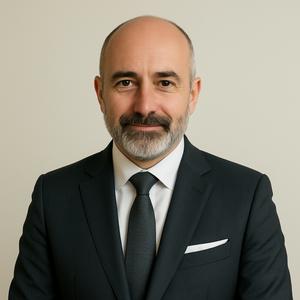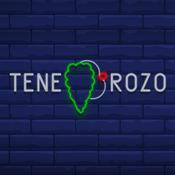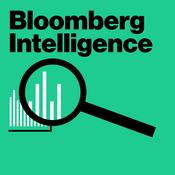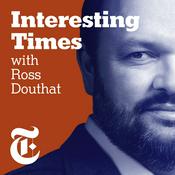Andrea Viliotti
Andrea Viliotti – Consulente Strategico AI per la Crescita Aziendale

Último episodio
Episodios disponibles
5 de 492
- IA Generativa: Guida Strategica per Manager sul Benessere e la Coesione del TeamStai implementando l'IA Generativa nella tua azienda? Come imprenditore o manager, la tua priorità è l'efficienza, ma c'è un costo nascosto che potresti non vedere: l'impatto sul benessere cognitivo e sociale del tuo team.Questo non è un video di opinioni. È un'analisi strategica basata su dati concreti di uno studio del 2025 (Journal of Innovation and Knowledge) su professionisti italiani [00:17].Scopri una guida pragmatica per leader che vogliono usare l'IA per amplificare i risultati, non le disfunzioni.In questo episodio scoprirai:Le 3 Dimensioni del Benessere: L'IA impatta diversamente sul benessere emotivo (meno burnout), sociale (più collaborazione) e cognitivo (pensiero critico) [02:03].Il Paradosso Cognitivo: Perché l'IA, da sola, NON migliora la lucidità o la competenza del team, anzi può creare "debito cognitivo" [05:04], [10:02].La Variabile Nascosta del Successo: La coesione del team è il fattore chiave che determina il successo dell'adozione dell'IA. L'IA è un amplificatore: potenzia i team uniti, ma frammenta quelli divisi [06:15], [11:11].Errore da Evitare: Perché distribuire licenze software "top-down" è una strategia fallimentare [10:43].Dalla Tecnologia al Design Organizzativo: La vera sfida per la leadership non è tecnologica, ma umana. Come riprogettare i processi e costruire fiducia [14:44].Guida all'Azione Manageriale: Come usare l'IA per generare opzioni, mantenendo la decisione finale umana [10:26].Compliance (AI Act): Sei pronto per le scadenze del 2026? Un ripasso fondamentale per i decisori aziendali [13:02].Questo episodio è una guida indispensabile per CEO, HR manager, imprenditori e leader che vogliono navigare la trasformazione digitale con consapevolezza, proteggendo la risorsa più importante: le proprie persone.#IAgenerativa #Leadership #Management #Benessere #Strategia #TeamBuilding #Produttività #Burnout #AIAct #DesignOrganizzativo--------20:10
- Hybrid AI: How a Model Outperformed VCs at Predicting Startup SuccessCan AI predict startup success better than a Tier-1 Venture Capital firm? This episode of the Andrea Viliotti podcast analyzes a new approach that tackles one of the biggest risks in business: high-stakes decisions based on opaque "black box" models.Large Language Models (LLMs) like GPT-4 are powerful, but executives can't risk millions on an answer they can't audit. This podcast dives into LLM-AR, a new "Hybrid AI" framework that combines the intuition of LLMs with the rigorous logic of Automated Reasoning (ProbLog).The results? In predicting startup success based only on founder traits, the LLM-AR model achieved 59.5% precision, effectively doubling the scaled benchmark for human Tier-1 VC funds (29.5%).This discussion, led by AI Strategy Consultant Andrea Viliotti, is essential for entrepreneurs, managers, and investors looking to move beyond the AI hype and implement real strategic advantages.Key takeaways for leaders:Beyond the Black Box: Understand how Hybrid AI (Neurosymbolic AI) provides full transparency. The LLM-AR model outputs human-readable rules (e.g., "IF perseverance AND vision THEN success"), making every decision auditable.The "Expert-in-the-Loop": This isn't about replacing human intuition; it's about augmenting it. Learn how this framework keeps the human manager in control, allowing them to review, validate, and even modify the AI's logic.Measure AI ROI (Precision vs. Recall): In venture capital, minimizing false positives (bad investments) is critical. We explore how the model was "tuned" (using F0.25) to prioritize precision, a concept managers can apply to tune AI for any specific business KPI.Governance & The AI Act: As the EU AI Act becomes law, "black box" models become a significant liability. Discover why transparent, interpretable systems like LLM-AR are not just smarter, but safer, and essential for future compliance.This episode translates complex AI concepts into measurable business outcomes, moving the conversation from "Which LLM is best?" to "How do I build an auditable, high-ROI AI strategy?"Explore the future of decision-making, AI governance, and the technology that finally opens the black box.--------22:37
- Strategia AI: L'IA Ibrida che batte i Venture Capital e apre la "Black Box"Un manager investirebbe milioni basandosi su una "scatola nera" inaffidabile? No.Questo è il limite principale dei modelli AI (LLM): la loro accuratezza variabile e l'opacità (black-box) frenano l'adozione per decisioni ad alto rischio.E se esistesse un'IA affidabile?Una recente ricerca (LLM-AR) ha dimostrato che un'IA Ibrida (LLM + Logica Simbolica) non solo è trasparente e interpretabile, ma ha battuto i migliori fondi di Venture Capital nel predire il successo delle startup (Precisione: 59.5% vs 29.5% dei Venture Capital).In questo video, lo Stratega AI Andrea Viliotti analizza questo caso di studio rivoluzionario. Scoprirai come l'IA sta evolvendo da strumento creativo a partner strategico affidabile, capace di gestire decisioni complesse, misurare il ROI e garantire la governance (inclusa la conformità all'AI Act).Questa è la guida essenziale per imprenditori e manager che vogliono smettere di subire l'hype dell'AI e iniziare a usarla per prendere decisioni migliori e verificabili.► CHI È ANDREA VILIOTTI (SINTESI)Andrea Viliotti: Stratega AI ed ex-imprenditore. Traduce la complessità dell'AI in ROI e strategia per CEO.INDICE DEL VIDEO (Capitoli):(L'uso dei timestamp è il fattore SEO decisivo per posizionare un video così denso di contenuti)00:00 Introduzione: Perché gli LLM "puri" sono un rischio per il business?01:15 L'Esperimento: È possibile predire il successo di una startup dai tratti del fondatore?02:30 I Risultati: L'IA Ibrida (LLM-AR) batte i Venture Capital (59.5% vs 29.5%)04:02 Cos'è l'IA Neuro-Simbolica (e ProbLog) per la fiducia aziendale05:18 Aprire la "scatola nera": L'interpretabilità e la trasparenza delle policy06:30 Integrazione strategica: Un percorso a complessità progressiva (Metodo Rhythm Blues AI)07:45 Come l'IA impara a decidere: Il processo iterativo spiegato ai manager09:01 Expert in the Loop: L'IA sostituisce l'analista strategico?10:10 Oltre la Precisione: Come misurare il ROI dell'IA (Precision vs Recall e F-score)11:27 Posizionamento avanzato: Il futuro dell'IA nelle decisioni complesse12:40 Governance e Sicurezza IA: Gestire Bias, Dati e il nuovo AI Act13:55 Conclusioni: Dal "più grande" (Bigger LLM) al "più intelligente" (Hybrid AI)APPROFONDIMENTI DA QUESTO VIDEO:IA IBRIDA (NEURO-SIMBOLICA): Non solo LLM. Questo video esplora come l'unione di reti neurali (intuizione) e logica simbolica (ragionamento, es. ProbLog) crei sistemi affidabili. L'IA non si limita a "indovinare", ma segue regole leggibili dall'uomo, fondamentali per la governance.OLTRE LA BLACK BOX: Il framework LLM-AR produce "policy" (regole) trasparenti. Per un manager, significa poter chiedere all'IA "Perché hai preso questa decisione?" e ricevere una risposta logica e verificabile, non una scatola nera.MISURARE IL ROI DELL'IA: L'analisi si sposta dalla "precisione" generica alla metrica di business corretta. Per i Venture Capital, il costo di un falso positivo è altissimo. Il modello LLM-AR è stato "sintonizzato" (con F-score) per massimizzare la precisione, minimizzando gli investimenti sbagliati.GOVERNANCE E AI ACT: La trasparenza di questi modelli è la chiave per la conformità normativa. L'AI Act europeo (Reg. (UE) 2024/1689) richiede tracciabilità e interpretabilità (Art. 12) per i sistemi ad alto rischio. Un'IA ibrida è nativamente progettata per questo.Questo video è basato sull'analisi della ricerca "LLM-AR: LLM-powered Automated Reasoning Framework" (arXiv:2510.22034v1).► IL TUO PROSSIMO PASSO STRATEGICOSei un imprenditore o un manager e vuoi capire come applicare un'IA strategica, misurabile e sicura nella tua azienda?Prenota una video call gratuita di 30 minuti con Andrea Viliotti per un'analisi preliminare:https://calendar.google.com/calendar/u/0/appointments/AcZssZ3eexqwmgoYCSqEQU_4Nsa9rvUYF8668Gp7unQ--------24:32
- The China Model: AI & Strategy Lessons for Leaders on Global Competition | Andrea ViliottiThis essential guide for entrepreneurs, managers, and CEOs decodes China's alternative model of innovation, governance, and strategy. Learn actionable lessons for your company.Why must every business leader understand the "China Model" now?China no longer competes on cost, but on strategic coherence. Its industrial policy, cultural drivers, and data governance are aligned for one goal: technological sovereignty. This episode unpacks the "philosophical software" (Confucian Ethics) driving this collective vision and how it translates into long-term planning—a stark contrast to Western quarterly cycles.What You Will Learn in This Episode:Strategic Coherence: How China aligns culture, industrial policy (Made in China 2025), and foreign policy (Belt and Road) into a unified plan—and how to apply this concept to your own corporate vision.AI Adoption Lessons: We analyze the three emerging AI paradigms (China: Embodied AI, US: Software AI, EU: Regulated AI) and what it means for your AI adoption strategy. Learn from China's management of data as a national strategic asset.Governance & Change Management: An AI transformation strategy almost always fails on culture, not technology. Understand how China uses narrative to engineer an "orderly society" and how you can use narrative to drive change management in your organization.Case Studies (EVs & Super-Apps): Analyze how giants like BYD are winning the electric vehicle (EV) war by redefining the product as a "smartphone on wheels" and the Vehicle-to-Grid (V2G) revolution. Explore the dominance of Super-Apps like WeChat, a true social operating system.Competition & Supply Chain: Beyond price wars. We examine China's competitive strategy (Sun Tzu) and the implications of global supply chain bifurcation for your business.Risk & Opportunity: From the real estate crisis as an unlikely catalyst for high-tech, to the deadlines of the EU's AI Act, this episode gives managers the tools to turn regulatory compliance into a competitive advantage.This is a strategic playbook for leaders making immediate decisions on AI, data governance, and competitive positioning. Listen now to build strategic coherence and stop investing in "digital cement" with no ROI.--------28:30
- Strategia Cina e IA: Lezioni di Governance per Imprenditori e Manager (Analisi Viliotti)Per imprenditori e manager, comprendere il modello strategico cinese non è più un esercizio geopolitico, ma una necessità di business immediata. La Cina non compete più sul costo, ma sulla "coerenza strategica" [00:35]: un allineamento totale tra politica industriale, ingegneria culturale e governance dei dati.In questa analisi approfondita, Andrea Viliotti decodifica il paradigma cinese [00:07] per fornire ai leader aziendali una prospettiva critica per navigare la complessità e definire strategie coerenti per l'adozione dell'Intelligenza Artificiale.Perché questa analisi è urgente? A causa di due fattori: la rapida ascesa della "IA Incarnata" (robotica, veicoli elettrici) [00:42] e le imminenti, stringenti scadenze dell'AI Act europeo [00:52], che impongono scelte immediate sulla gestione dei dati.Ascoltando questo episodio, scoprirai:Il "Software Filosofico": Come l'etica confuciana [01:28], basata sull'armonia sociale e non sull'individualismo occidentale, plasma un'idea di successo collettivo [02:49] che guida aziende e nazione.IA Incarnata vs. IA Software: Perché la Cina sta dominando l'IA integrata nell'hardware (Smart City, Veicoli Elettrici, Vehicle-to-Grid [14:32]) mentre l'Occidente si concentra sull'IA generativa (software) [26:27].Governance a Tre Velocità: Un confronto diretto tra i tre paradigmi tecnologici globali: il modello statale cinese (sovranità), quello di mercato americano (dominio) e quello europeo (regolamentazione e diritti) [22:41].Dallo Smartphone alla Strada: L'analisi del settore automotive [12:39], dove la Cina (es. Xiaomi) vince non sulle prestazioni, ma trasformando l'auto in uno "smartphone su ruote" [12:48].La Crisi come Catalizzatore: Come la vulnerabilità sistemica (la crisi immobiliare [20:34]) stia, paradossalmente, accelerando gli investimenti nei settori high-tech del piano "Made in China 2025" [21:57].Azioni Concrete: Le 3 domande strategiche (Cultura, Dati, ROI) [28:11] che ogni CEO deve porsi ora per evitare di investire in "cemento digitale" e allineare l'IA alla strategia aziendale [29:04].Questa non è un'analisi sulla Cina; è un'analisi sul futuro del vostro business nell'era dell'Intelligenza Artificiale.Parole chiave: Intelligenza Artificiale, IA, Strategia Aziendale, Modello Cinese, AI Act, Governance, Leadership, Management, Imprenditori, Trasformazione Digitale, Made in China 2025, Coerenza Strategica, Andrea Viliotti, Podcast Business.--------29:50
Más podcasts de Noticias
Podcasts a la moda de Noticias
Acerca de Andrea Viliotti
Benvenuto su Strategia IA per le PMI industriali europee, il canale di Andrea Viliotti dedicato a trasformare l'Intelligenza Artificiale da un concetto astratto a un vantaggio competitivo concreto per la tua azienda.
Sei un imprenditore o un manager di una piccola o media impresa nel settore industriale e ti chiedi come l'IA possa realmente ottimizzare la produzione, migliorare l'efficienza e aprire nuovi mercati? Sei nel posto giusto.
In questo canale, demistifichiamo l'IA e la rendiamo accessibile. Attraverso analisi chiare, casi studio concreti e strategie applicabili.
Sitio web del podcastEscucha Andrea Viliotti, The Daily y muchos más podcasts de todo el mundo con la aplicación de radio.net

Descarga la app gratuita: radio.net
- Añadir radios y podcasts a favoritos
- Transmisión por Wi-Fi y Bluetooth
- Carplay & Android Auto compatible
- Muchas otras funciones de la app
Descarga la app gratuita: radio.net
- Añadir radios y podcasts a favoritos
- Transmisión por Wi-Fi y Bluetooth
- Carplay & Android Auto compatible
- Muchas otras funciones de la app


Andrea Viliotti
Escanea el código,
Descarga la app,
Escucha.
Descarga la app,
Escucha.


































